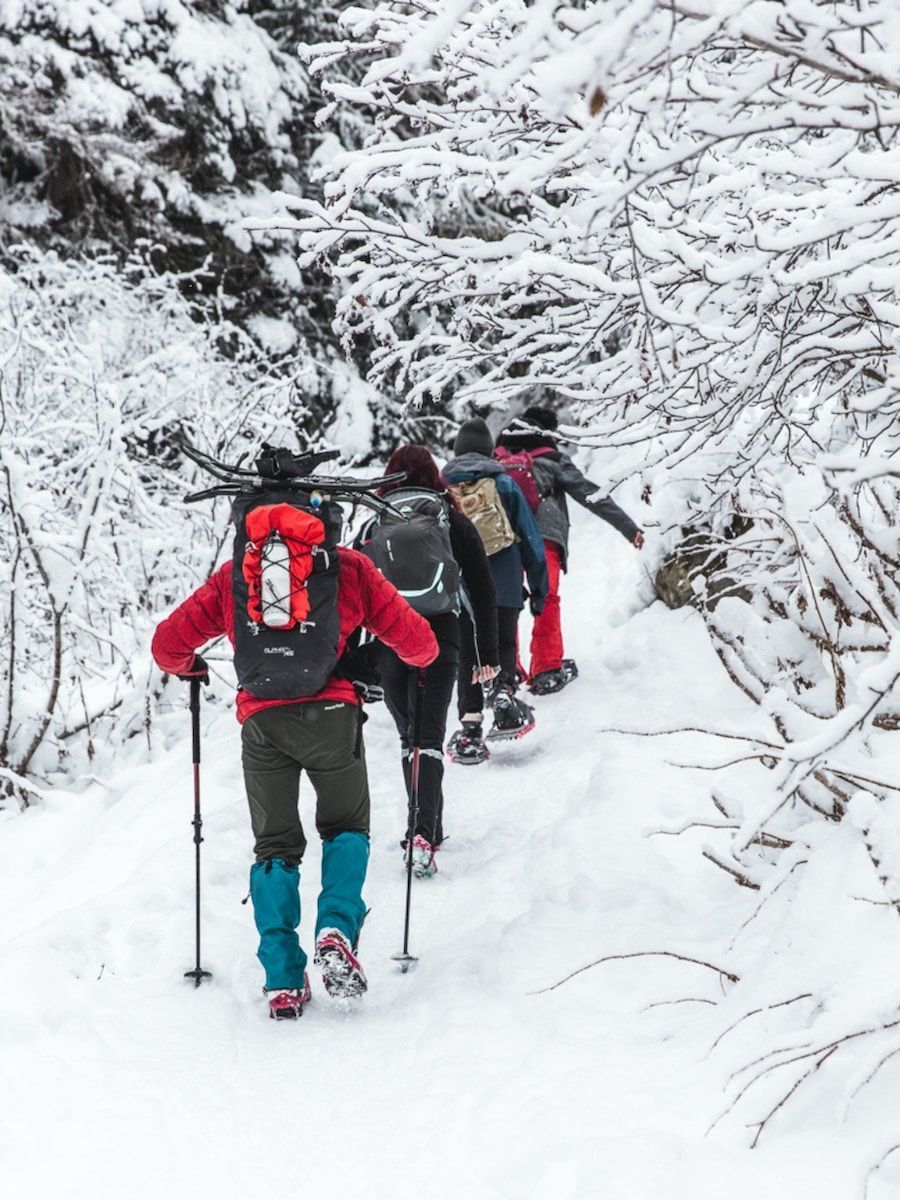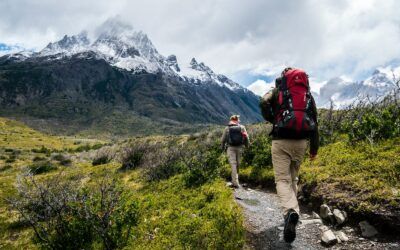Winter hiking demands meticulous preparation for safety and enjoyment. This comprehensive guide covers what to wear for a winter hike and other essentials. Gain essential knowledge and practical tips to navigate challenges and splendors, from gear selection to safety precautions. So get your winter hiking kit ready, and embark on a confident and well-equipped winter hiking adventure.
Winter Hiking clothes
1. Layer Up for Success
Layering is a fundamental aspect of winter hiking, not a mere suggestion. It’s a strategy that enables you to fine-tune your body temperature as conditions change throughout your hike. Begin with a moisture-wicking base layer that keeps sweat away from your skin, preventing the chill of moisture against your body. Next, add an insulating layer, like a fleece or down jacket, to trap the warmth generated by your body. Finally, top it off with a waterproof and windproof outer layer to shield against the elements. This three-layer system grants you versatility, allowing you to shed or add layers as needed.
Remember, not all layers are created equal. High-quality materials like merino wool for base layers, synthetic or down insulation, and Gore-Tex for outer shells offer the best performance. Make sure your clothing fits comfortably but allows for mobility, as overly tight clothing can restrict blood flow and lead to cold extremities.
2. Insulated Footwear
A pair of high-quality insulated winter hiking boots can be your best friend in the winter wilderness. Look for boots that are not only waterproof but also insulated for warmth. Good traction is non-negotiable, as slippery terrain can be treacherous. To complement your boots, choose warm, moisture-wicking socks to keep your feet comfortable and dry throughout your hike.
When selecting boots, consider the thickness of your winter socks. Ensure that your boots have enough space to accommodate them comfortably without compressing your toes, which could lead to frostbite in extremely cold conditions.
3. Winter HIKING attire
Protecting your extremities is crucial. Invest in high-quality gloves or mittens, a warm winter hat, and a neck gaiter or balaclava to shield your face from frigid winds. Snow blindness is a real concern, so don’t forget to pack sunglasses with UV protection to safeguard your eyes from the sun’s harsh glare.
When it comes to gloves or mittens, consider having a spare pair in your pack. Wet gloves can quickly lead to cold hands, so having a backup can make all the difference in maintaining warmth and comfort.
4. Technical Clothing
Technical winter clothing, including insulated pants or bibs, is designed with the cold in mind. These specialized garments provide an extra layer of insulation and protection against snow, wind, and moisture. Consider them an investment in comfort and safety on the trail.
When choosing insulated pants, look for those with full-length side zippers. These zippers make it easy to vent excess heat during strenuous climbs or when the sun unexpectedly emerges, preventing overheating and sweat buildup.
5. Proper Footwear Traction
In addition to insulated winter hiking boots, consider adding traction devices to your winter hiking gear arsenal. These devices, such as microspikes or crampons, can significantly improve your grip on icy or packed snow-covered trails. They attach securely to your boots, providing added stability and preventing slips and falls.
The choice between microspikes and crampons depends on the terrain you plan to traverse. Microspikes are suitable for less technical trails with icy or packed snow surfaces. Crampons, on the other hand, offer more aggressive traction and are ideal for steeper, icy, or mixed terrain. Make sure you practice using these devices before hitting the trail to ensure a secure fit and proper technique.
6. Research and Planning
In winter, knowing your chosen trail inside out is paramount. Understand its terrain, elevation changes, and potential hazards. Delve into recent trail reports to gauge snow conditions and any potential obstacles. Equally important is checking the weather forecast for the area, and paying special attention to temperature fluctuations and expected snowfall.
Consider consulting local hiking clubs, online forums, or social media groups to gather up-to-date information on trail conditions and experiences from fellow hikers. Additionally, check if permits or seasonal restrictions apply to the area you intend to visit.
7. Share Your Plans
Before embarking on a winter hiking excursion, let someone reliable know your exact plans. Share your intended route, estimated return time, and any emergency contact information. Carrying a dependable communication device, like a satellite messenger, is essential for staying connected in remote areas where cell service may be unreliable.
When sharing your plans, be sure to specify your expected route and any alternative routes or bailout points you may have identified in case conditions become too challenging or dangerous. Having a backup plan can be a lifesaver in unpredictable winter conditions.
8. Navigation Tools
Navigational competence is crucial in winter hiking. Carry a topographic map and a reliable compass, and be well-versed in their use. In snowy conditions, when trails can be obscured, a GPS device can be a valuable backup. Make sure you’re proficient in its operation before relying on it in the wilderness.
Before your hike, mark key waypoints on your map, such as trail junctions, water sources, and potential hazards. Familiarize yourself with the terrain, and identify prominent landmarks that can help you stay oriented, even when visibility is reduced by snow or fog.
9. Avalanche Awareness
If your winter hike takes you into avalanche-prone terrain, it’s imperative to be educated in avalanche safety. Consider enrolling in an avalanche safety course, which will equip you with the knowledge and skills to assess and mitigate avalanche risk. Additionally, carry essential avalanche gear, including a transceiver, shovel, and probe, and know how to use them effectively.
When traveling in avalanche terrain, always prioritize safety by checking the daily avalanche forecast for your region. This valuable information can help you make informed decisions about which slopes to avoid and which routes are safer to traverse.
10. Emergency Preparedness
Being prepared for the unexpected is a cornerstone of winter hiking safety. Pack a well-equipped first aid kit and familiarize yourself with its contents and their uses. Consider taking a wilderness first aid course to enhance your ability to respond to injuries or medical emergencies in remote settings.
Carry a headlamp or flashlight with extra batteries, as daylight hours are shorter in winter. If your hike extends into the evening or unexpected delays occur, having reliable illumination is crucial
In your quest to conquer the beauty and challenges of winter hiking, remember that there’s no shame in seeking expert guidance. If you find yourself in need of personal training to elevate your skills and confidence, consider signing up for our personal training and specialized hiking training programs. These resources can provide you with invaluable knowledge, techniques, and fitness routines tailored to your needs, ensuring that you’re well-prepared and safe on your winter hiking adventures. Embrace the opportunity to learn, grow, and embark on unforgettable journeys in the winter wilderness with the support of experts at Aspire for Adventure.





0 Comments